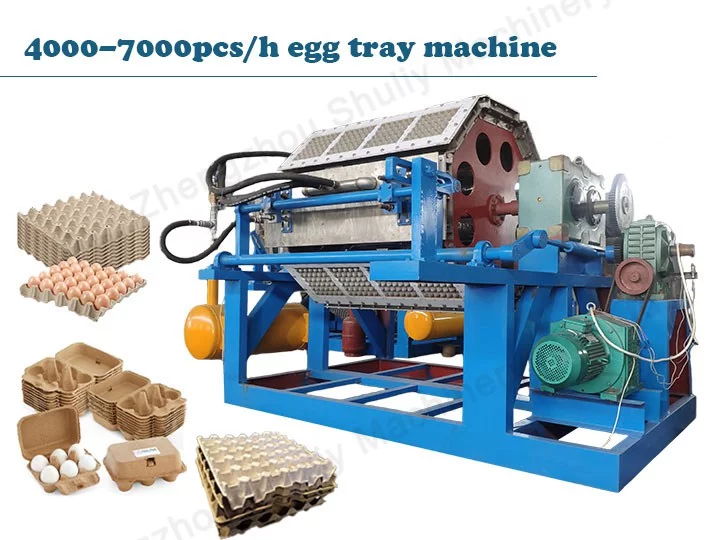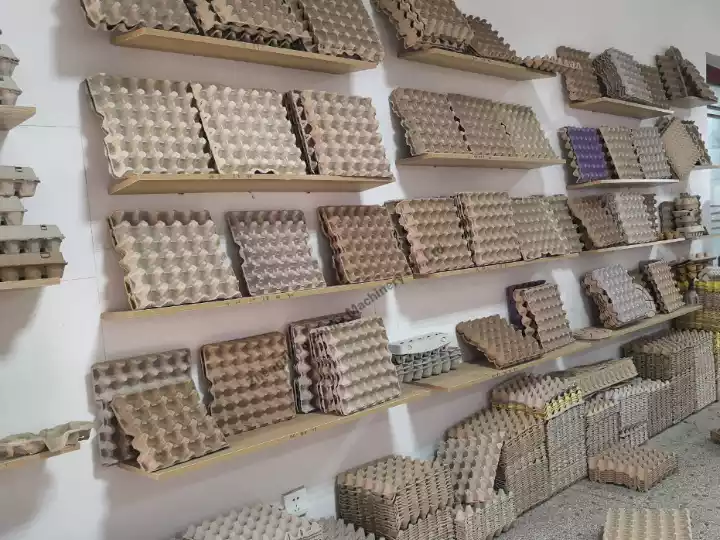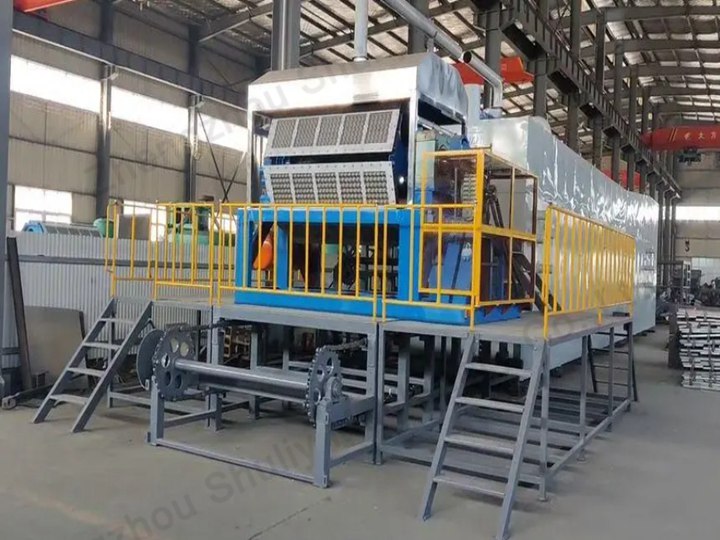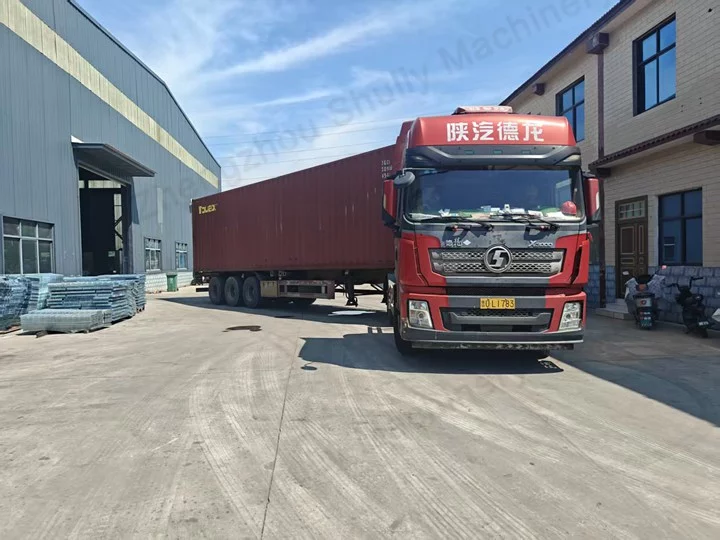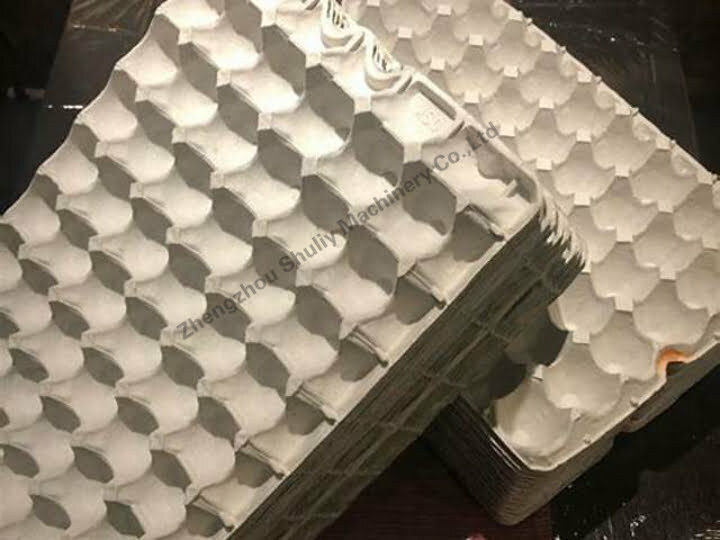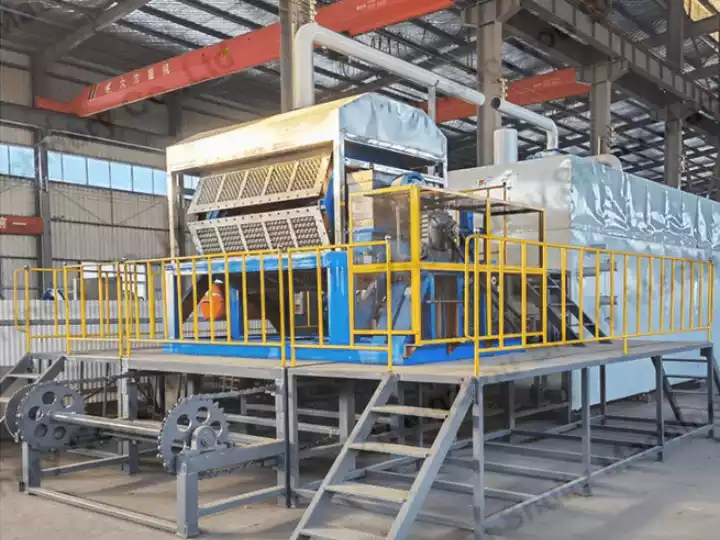Was ist das Funktionsprinzip einer Apfelkorbformmaschine?
Apple tray production is becoming increasingly popular as fruit exporters and packaging factories look for eco-friendly, shock-absorbing solutions. The apple tray forming machine works similarly to an egg tray machine—the only major difference lies in the shape of the molds.
This article explains the full production workflow, from pulping to forming, so buyers can clearly understand how an apple tray making machine works before investing.


Raw Material Preparation
The production starts in the pulping system, where raw materials such as:
- Waste cardboard
- Old corrugated cartons (OCC)
- Zeitung
- Paper scraps
are mixed with water inside a pulping machine.
How It Works
The pulper crushes and agitates the paper fibers until they become a uniform slurry. Adjusting the pulp concentration is crucial because it directly affects the final apple tray thickness and strength.
The output is a smooth, consistent pulp ready for forming.


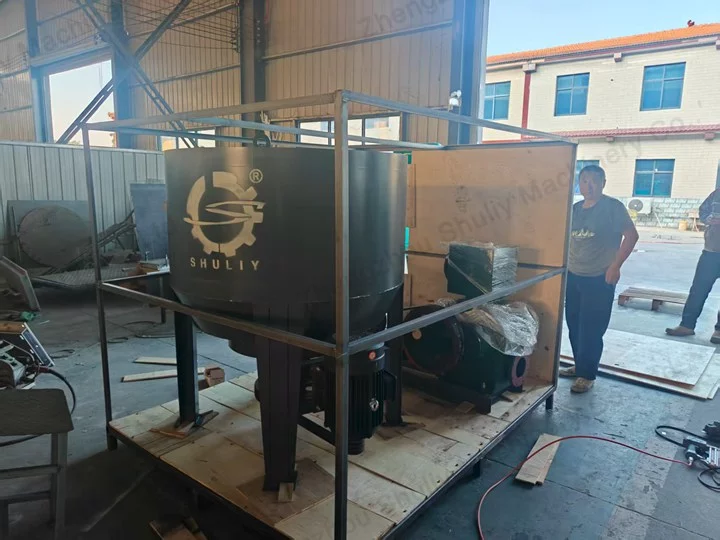
Pulp Adjustment and Storage
After pulping, the mixture flows into a homogenizing tank, where additives such as:
- Waterproofing agents
- Stiffening agents
may be added depending on product requirements.
The pulp is then pumped into a storage tank for continuous feeding to the forming machine. Keeping pulp stable ensures uniform tray quality.
Apple Tray Forming Machine
This is the most important step. The apple tray forming machine uses vacuum suction molding technology, the same principle used in egg tray production.
Step-by-step forming process:
- The forming mold dips into the pulp tank.
- Vacuum pressure draws the pulp fibers onto the mold surface.
- Excess water is removed instantly through the vacuum system.
- A wet apple tray is shaped exactly according to the mold cavities.
The only real difference from egg tray production is the mold—apple trays require deeper, rounder cavities designed specifically to hold fruit securely.
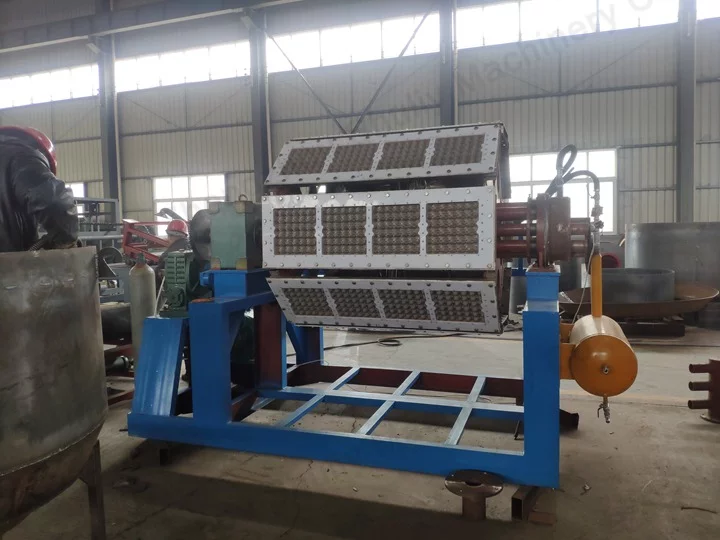
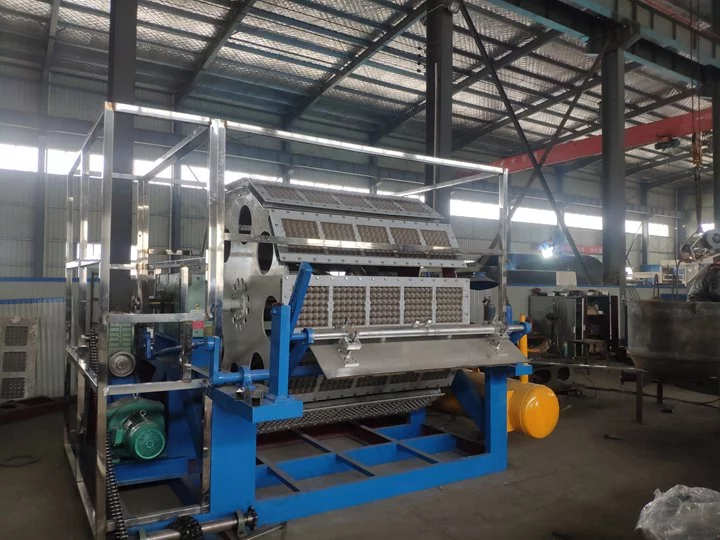
Drying Section
After forming, the wet apple trays must be dried. Depending on the factory scale, customers can choose:
- Metal drying line (fuel, gas, diesel)
- Brick drying house
- Natural sun drying (for low-cost small projects)
The automated drying line is the most stable option because it ensures fast, clean, and uniform drying.
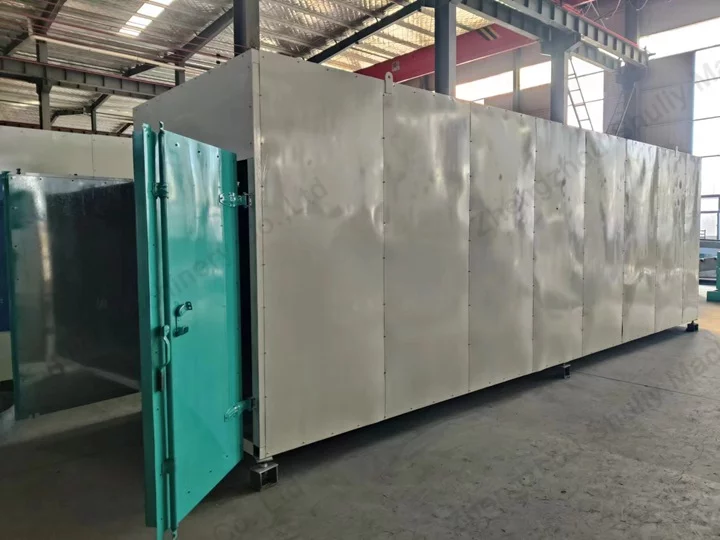
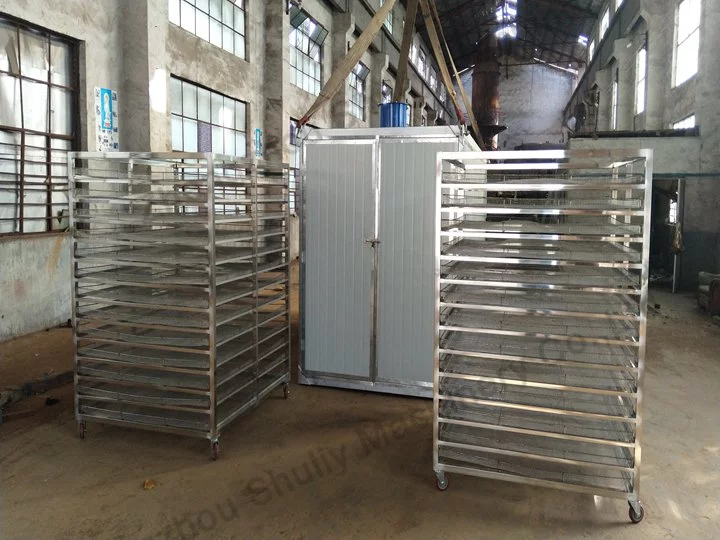
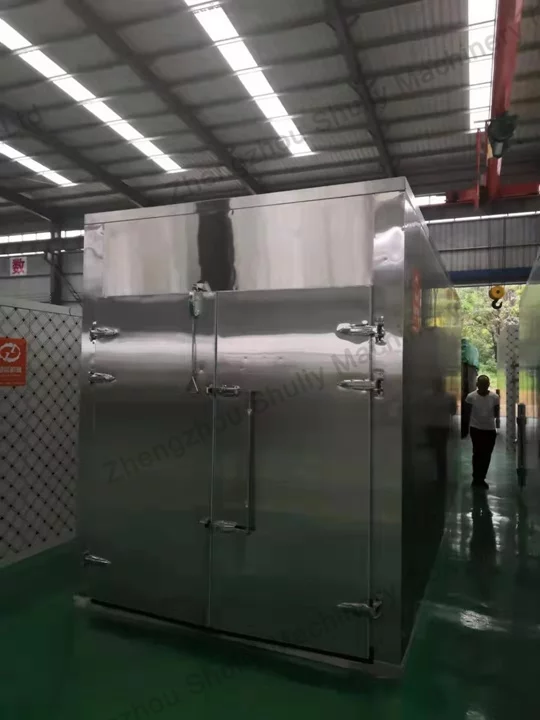
Hot Pressing
Once dry, the trays can be optionally passed through a hot press machine.
Benefits of hot pressing:
- Smoother surface
- More accurate shape
- Higher strength
- Better stacking and transport durability
For high-grade export fruit packaging, hot pressing is highly recommended.

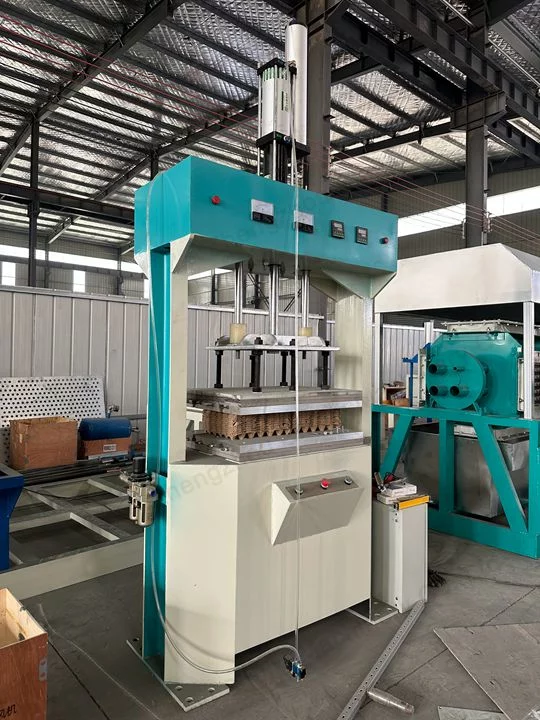
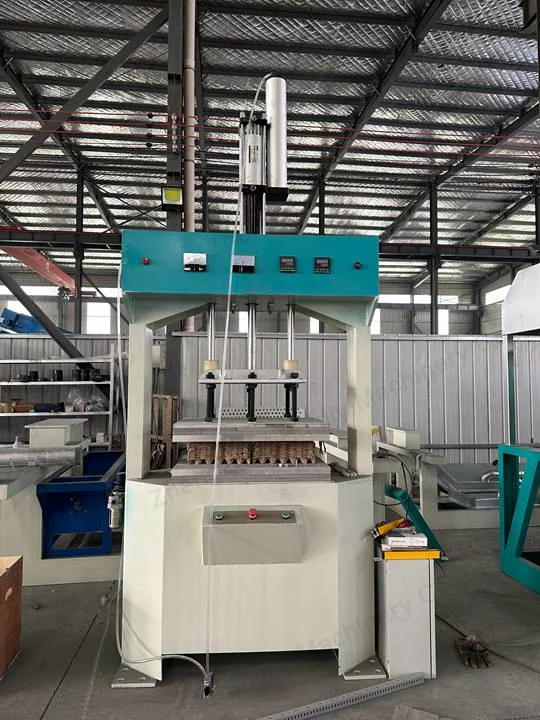
Final Stacking and Packaging
The finished trays are automatically:
- Stacked
- Counted
- Packed
and prepared for delivery.
This creates a fully automated workflow where the apple tray forming machine operates with minimal labor—typically, 1–3 workers can manage an entire line.
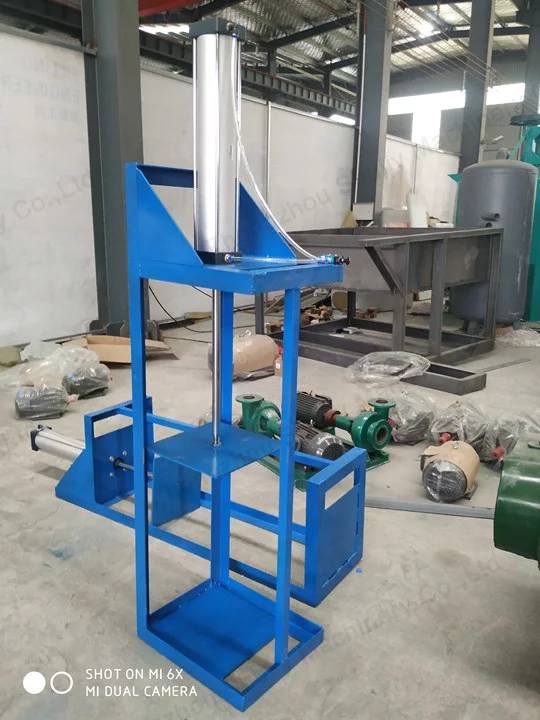
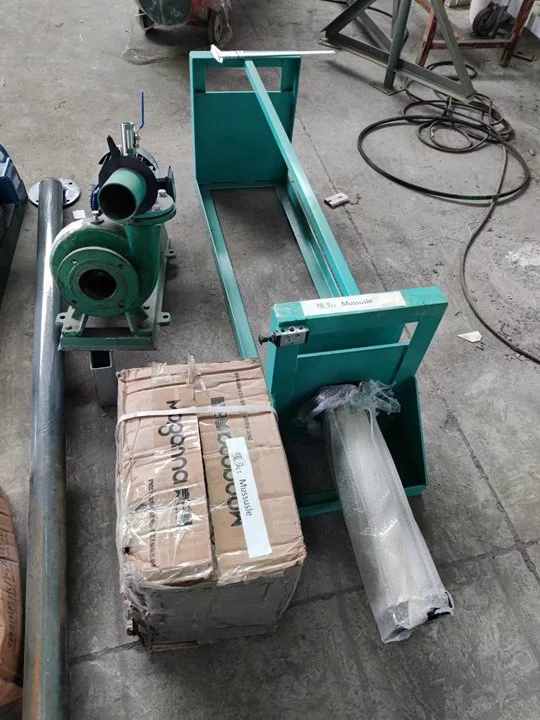

Why Apple Tray Makers Prefer This Production Line?
- Eco-friendly molded pulp packaging
- Low raw material cost
- High-value application in fruit packaging and export markets
- Similar technology to egg tray machines—easy to learn and maintain
- Flexible mold customization: apple trays, pear trays, mango trays, etc.
For fruit producers, packaging factories, and agricultural exporters, investing in an apple tray making machine is a profitable and sustainable choice.
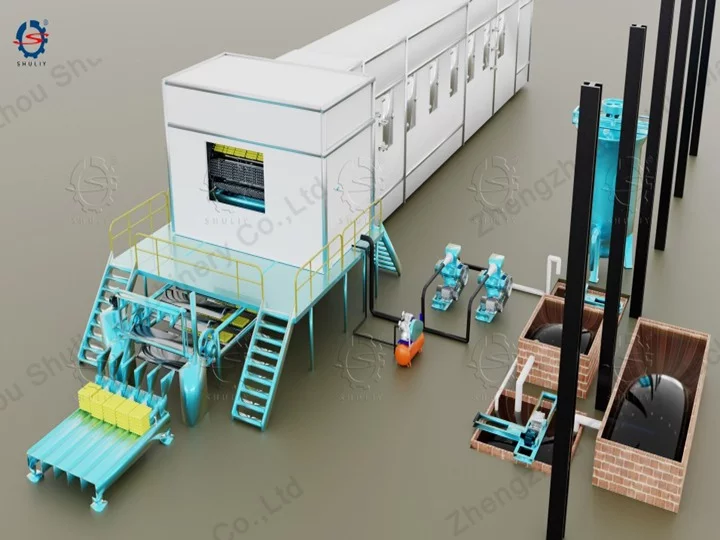
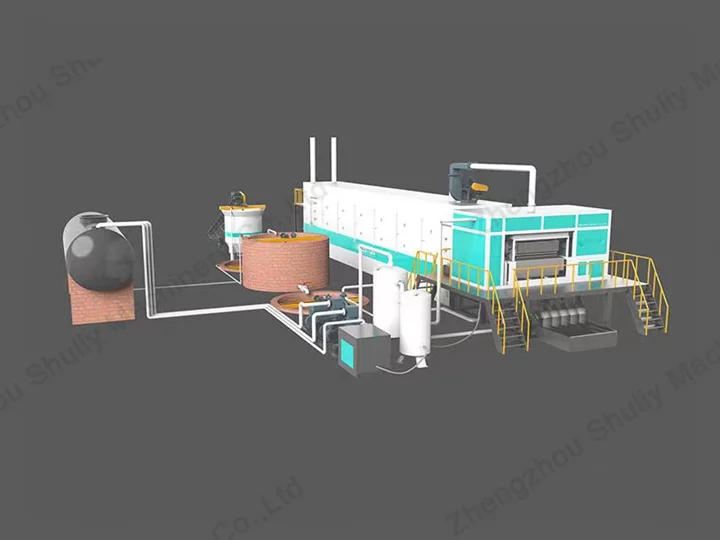
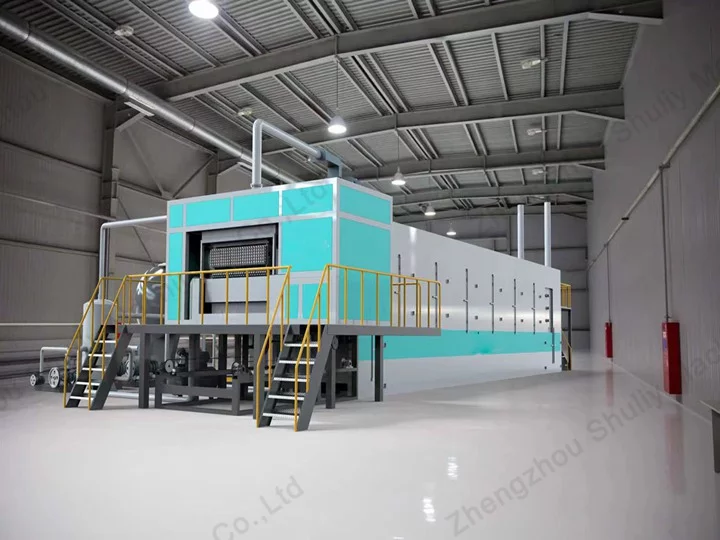
A Modern and Efficient Way to Produce Apple Trays
With simple raw materials, stable output, and high automation, the apple tray forming machine offers a reliable solution for producing durable molded pulp fruit trays. Whether you are expanding your packaging business or starting a new eco-product line, this machine provides efficiency, consistent quality.
If you want the full production plan, machine quotation, mold customization, or layout design, contact us today. We will recommend the best apple tray production line according to your budget and capacity.

